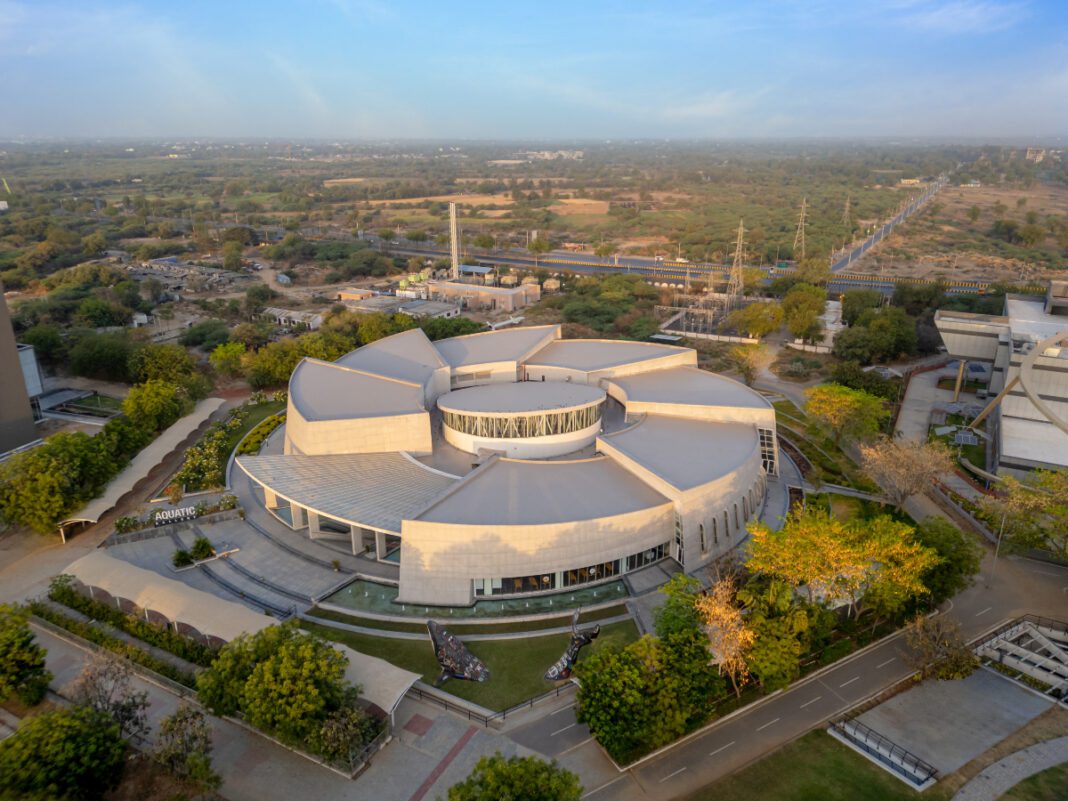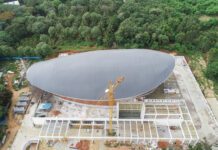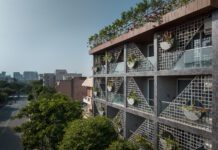The Aquatic Gallery in Ahmedabad’s Science City Campus was inspired by the harmonious and intricate forms of nature, particularly the spiralling patterns of galaxies and the elegant shells along Gujarat’s coast. Its nautilus-influenced design beautifully symbolises the unity between science and nature, embodying principles of growth, movement, and organic fluidity. The circular layout creates an immersive and dynamic experience, with exhibits unfolding in a synchronised narrative that mirrors the rhythms of the natural world.
The natural form symbolises the interconnectedness of science and the endless pursuit of discovery, a concept seamlessly woven into the gallery’s architecture. One of the key highlights are the multi-level galleries and the underwater viewing walkway; they provide immersive, multi-dimensional encounters with aquatic life. They have been designed to guide visitors through a cohesive and captivating spatial journey. They also offer varied perspectives while maintaining a fluid narrative that mirrors the wonders of the underwater world.
Jayesh Hariyani, Chairman and Managing Director, INI Design Studio, highlights steel’s adaptability in shaping intricate nautilus-inspired forms and its precision in integrating advanced technologies like high-performance glazing and insulated envelopes, boosting energy efficiency and thermal comfort.
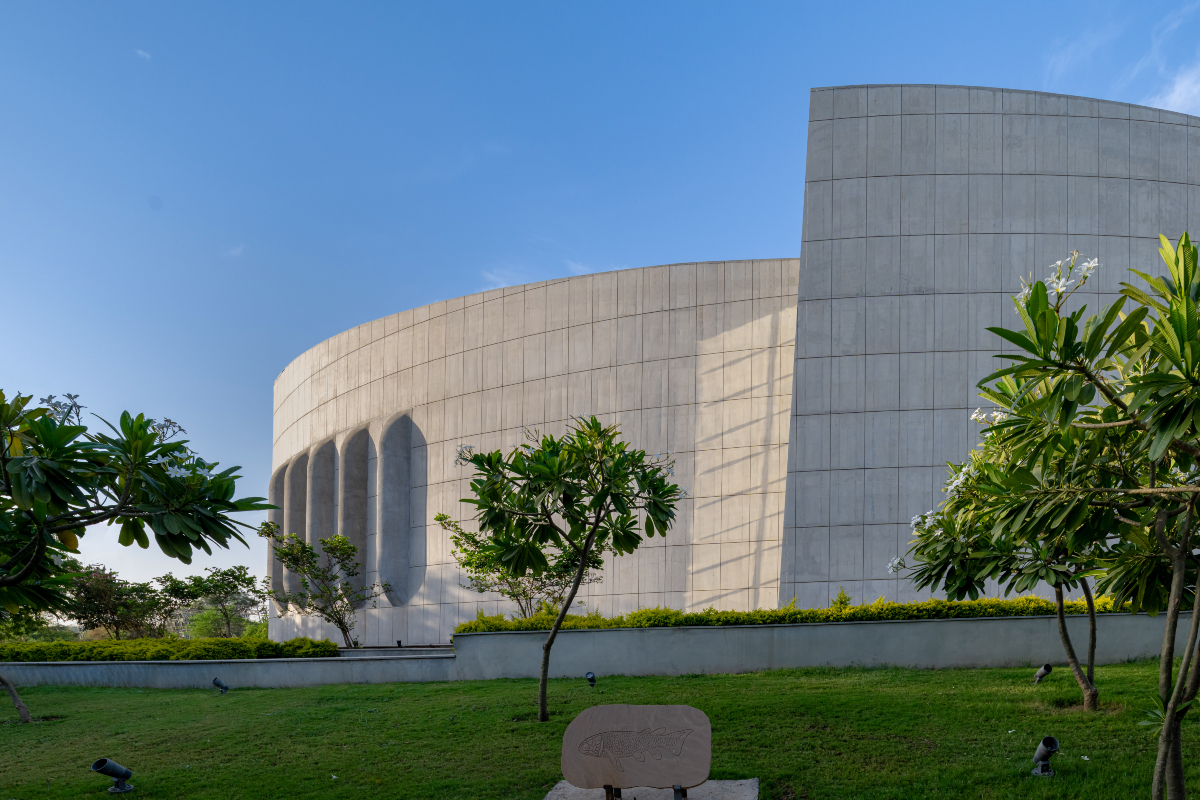
Immersive Inspiration
The Aquatic Gallery’s design, inspired by the nautilus shell and organic forms found in nature, effortlessly integrates science, art, and architecture. Its spiralling form, reminiscent of Gujarat’s coastal shells and cosmic galaxies, reflects growth, movement, and organic fluidity. The circular layout, centred on the nautilus’s logarithmic spiral and interconnected chambers, is a metaphor for the interconnectedness of science and continuous exploration. This inspiration translates into a visually striking and functionally efficient structure, creating an immersive journey where exhibits unfold in a synchronised narrative that mirrors the natural world.
The design combines segmented, spiralled galleries and a central circular atrium to create seamless movement and immersive experience. The galleries expand progressively, enhancing visual fluidity and intuitive navigation, while the atrium, illuminated by natural light through clerestory windows, fosters openness and a connection to nature.
Key features such as the underwater viewing walkway and multi-level galleries offer dynamic perspectives of aquatic life, maintaining continuity in the spatial journey. Integrated technology — including advanced lighting, AV systems, projections, and interactive environmental graphics — enriches the sensory experience, balancing visual appeal with functionality. Together, these elements create an engaging, educational, and sustainable environment that celebrates scientific inquiry and the beauty of nature.
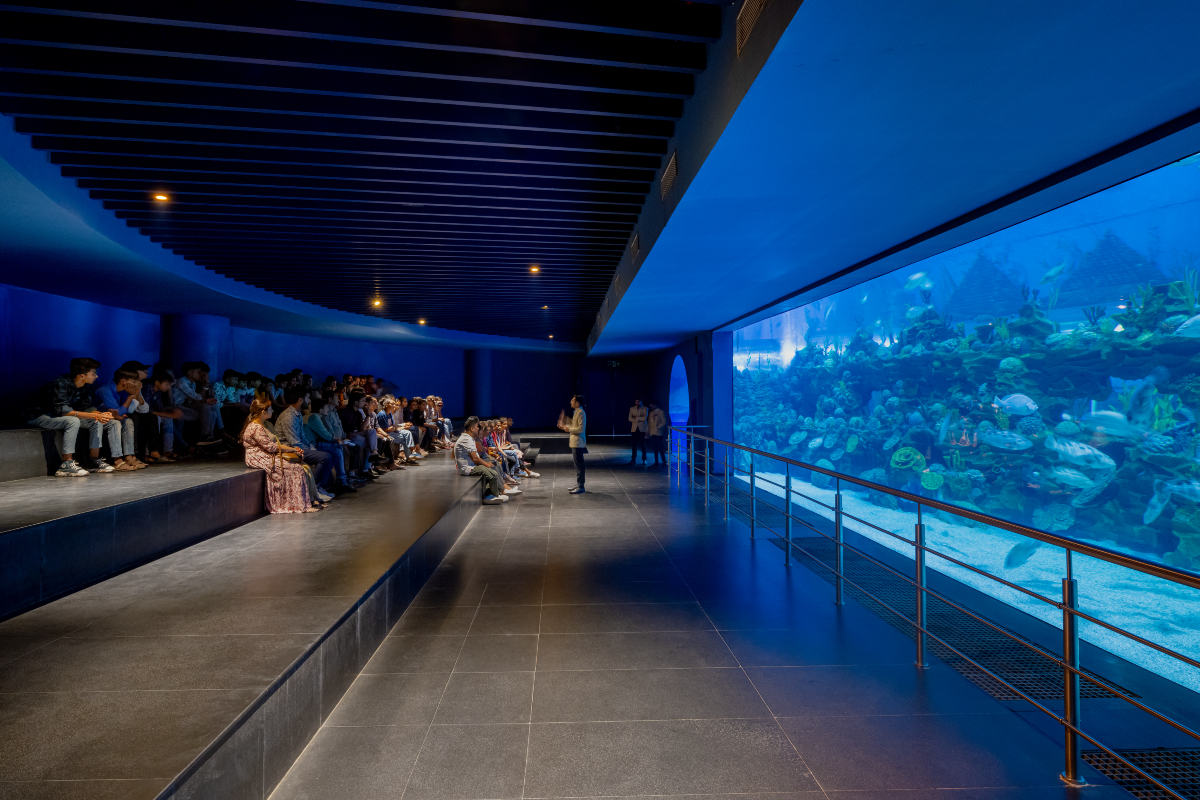
Curving Canvas
The decision to incorporate steel into the structure was driven by its strength, durability, sustainability, and functionality, aligning with the project’s structural and aesthetic goals. Steel provided the resilience needed to support the complex nautilus-inspired spiral structure and heavy water tanks, ensuring stability and durability for sensitive aquatic ecosystems. Its recyclable nature and high strength-to-weight ratio minimised environmental impact and material wastage, complementing sustainable elements like fly ash bricks and green concrete. Its adaptability enabled the realisation of intricate circular and segmented forms while integrating seamlessly with advanced technologies like high-performance glazing and insulated envelopes to enhance energy efficiency and thermal comfort. Additionally, prefabrication and modular construction allowed for efficient project execution, overcoming challenges posed by the pandemic.
The materials selected for the gallery reflect a commitment to durability, sustainability, and harmony with natural elements. Exposed RCC adds strength and resilience while creating dynamic visual effects through light and shadow interplay, enhancing the structure’s architectural appeal. Fly ash bricks and green concrete reduce the project’s carbon footprint, aligning with its environmental goals, while high-performance glazing with low emissivity ensures thermal comfort, energy efficiency, and optimal daylighting.
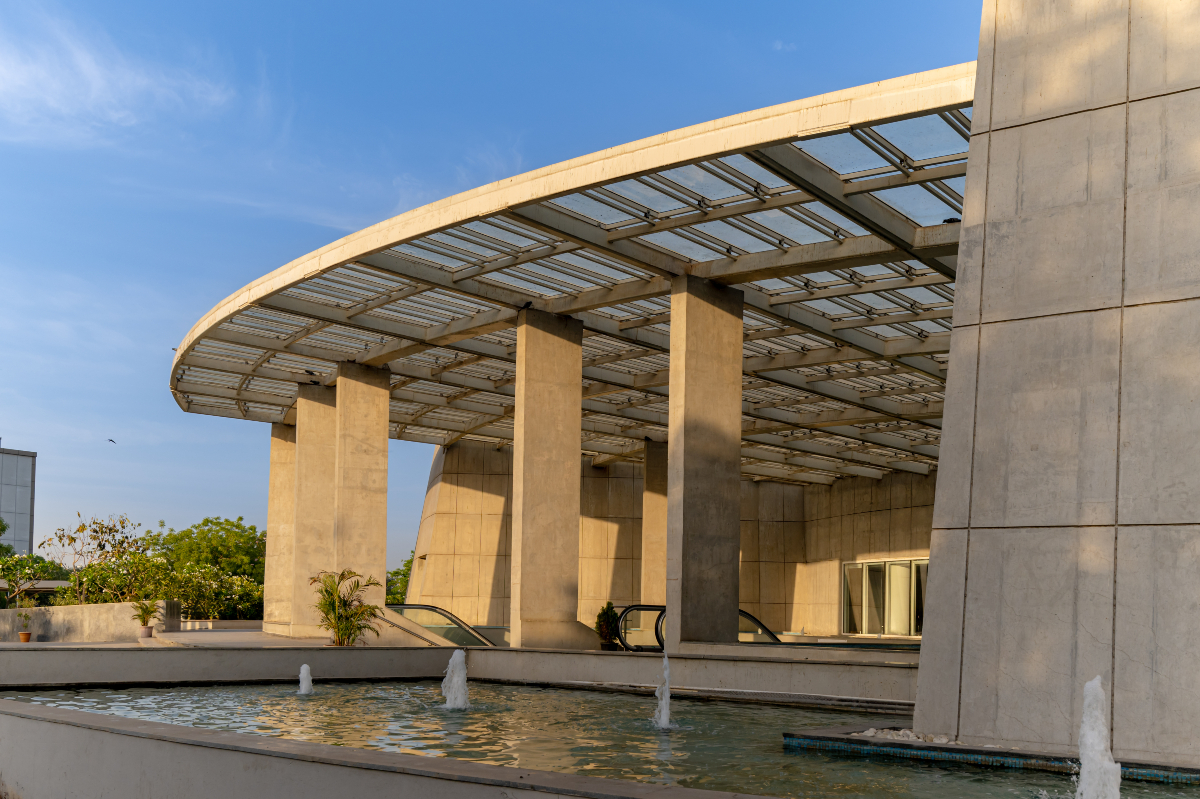
Executing the project during the pandemic presented challenges, including maintaining timelines, and quality, and procuring aquatic species from international borders. The gallery’s unique design—featuring inclined slabs, grooves, curved walls, and a 23 tonne acrylic viewing panel—required meticulous planning and specialised expertise. Building Information Modelling (BIM) was instrumental in coordinating civil, architectural, and MEP disciplines, preventing service clashes and enabling precise execution. Custom formwork and self-compacting concrete enhanced efficiency, while collaboration with over 40 specialised sub-contractors ensured the successful realisation of the intricate design. Advanced Life Support Systems (LSS) were pivotal in maintaining diverse aquatic habitats. Centralised tanks supplied fresh and saltwater through hydropneumatics, while Zero Liquid Discharge (ZLD) technology ensured efficient water recycling. Double-walled gallery tanks, along with robust filtration and temperature control systems, guaranteed stable water quality critical for aquatic life’s well-being.
Sustainable Sanctuary
The Aquatic Gallery incorporates advanced measures to minimise energy and water consumption. It showcases features like an insulated envelope, low-emissivity glazing, and self-shading architectural elements that reduce heat gain, while rooftop solar panels harness renewable energy. A centralised chilled water system equipped with Variable Frequency Drives (VFDs) and evaporative cooling reduces energy use by 30 per cent, aided by intelligent automation for lighting and climate control. Water-saving measures include a Zero Liquid Discharge (ZLD) system for saltwater recycling, efficient plumbing fixtures, and rainwater harvesting, achieving a 44 per cent reduction in water consumption. These innovations align with the gallery’s environmental ethos while ensuring operational efficiency and sustainability.
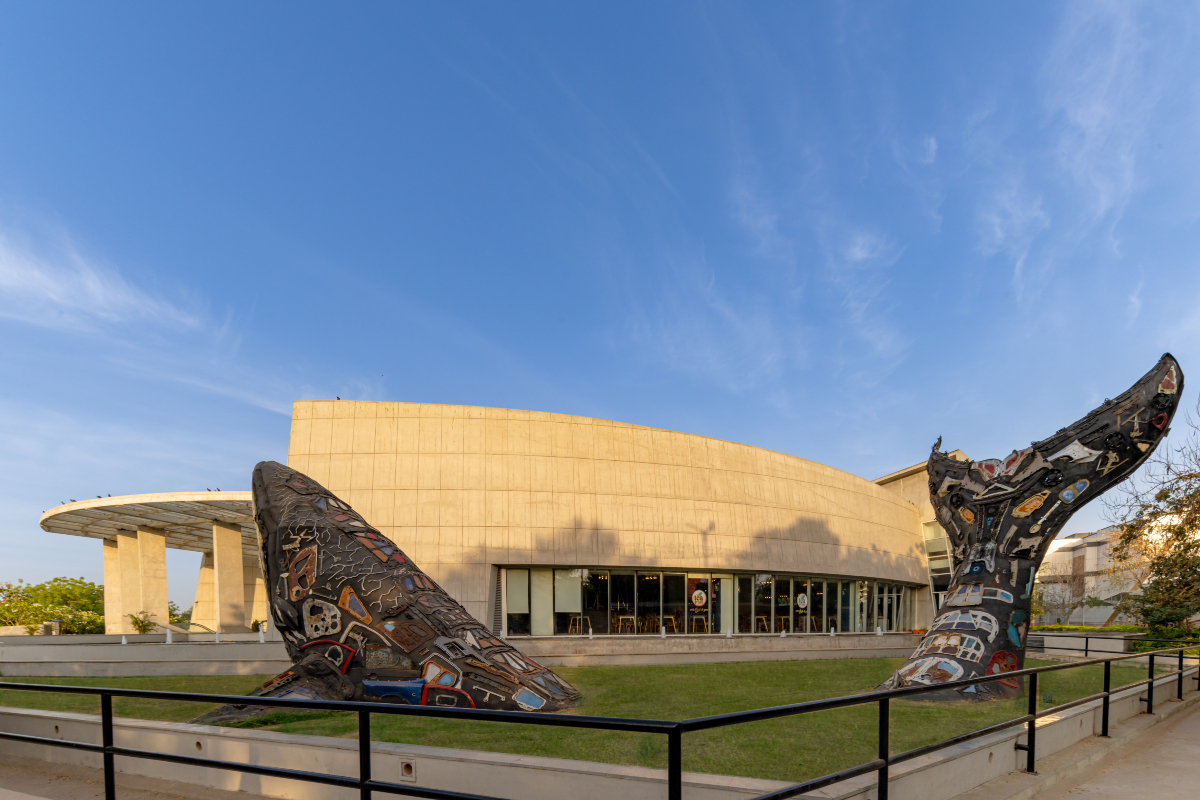
The gallery’s shell-shaped design, inspired by aquatic life, integrates seismic-resistant features tailored to Ahmedabad’s seismic zone. RCC and innovative formwork enhance the structural integrity of inclined walls and heavy water tanks, while advanced simulation techniques and Building Information Modelling (BIM) ensured precision and seamless coordination between civil, architectural, and MEP teams. This robust approach not only provides resilience against seismic forces but also ensures long-term durability and efficient maintenance of the facility. The dual-faced design separates public spaces from back-of-house areas, optimising visitor experiences and supporting the smooth operation of aquatic exhibits.
India’s first facility of its kind, the Aquatic Gallery attracts over one million visitors annually, combining education, entertainment, and conservation awareness. Exhibits featuring freshwater, brackish, and saltwater ecosystems are enriched by interactive technologies such as projection mapping and touchscreens, fostering a deeper understanding of marine life. Back-of-house spaces ensure optimal habitats for aquatic species, supported by breeding and quarantine facilities that promote sustainability. The gallery’s inclusive initiatives, including subsidised tours for schoolchildren, emphasise its commitment to community engagement and education, making it a benchmark for sustainable and socially responsible edutainment.
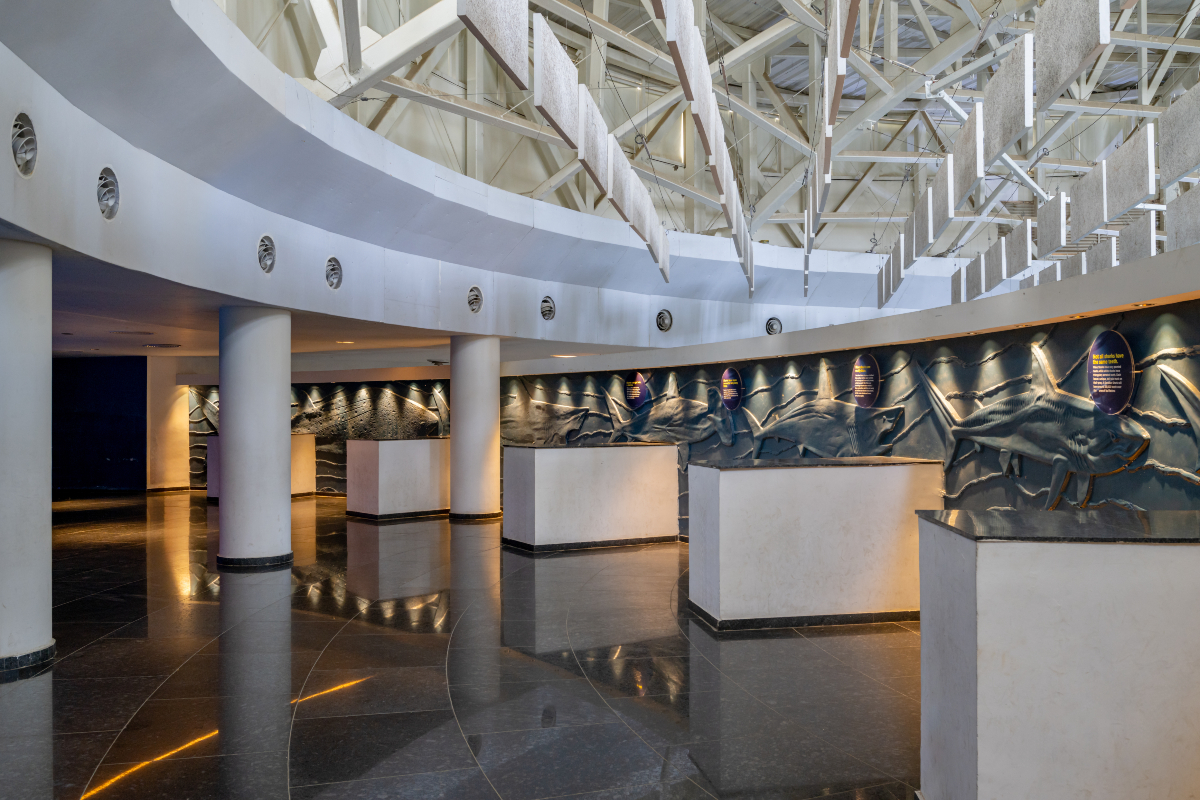
Fact File
Project Name: Aquatic Gallery at Science City, Ahmedabad
Client/Developer: Department of Science and Technology, Gujarat Council of Science City
Architect & Project Management: INI Design Studio
Structural Consultant: Ducon Consultants Pvt Ltd
Fabricator: Shapoorji Pallonji and Company Pvt Ltd
Supplier: TATA and Jindal
Tonnage: 280 MT
Current Status: Completed
Quote
“The Aquatic Gallery, situated within the sprawling Ahmedabad Science City in Gujarat, is a 5th generation facility, India’s first inland aquarium. Conceived and developed by the Gujarat Council of Science City, the Gallery is distinguished by its comprehensive approach to educational outreach, community engagement, and sustainability initiatives. Beyond serving as a premier destination for edutainment, it actively fosters scientific curiosity and environmental awareness through outreach programs, workshops, and interactive exhibits. The gallery’s commitment to sustainability through the use of environmentally friendly materials, energy-efficient systems, and water conservation measures, sets a precedent for environmentally conscious architectural design. “
– Jayesh Hariyani, Chairman and Managing Director, INI Design Studio


